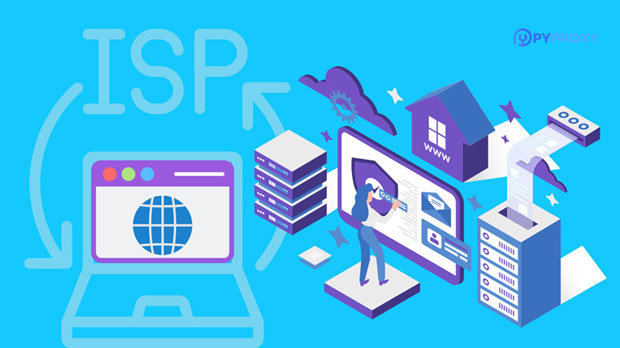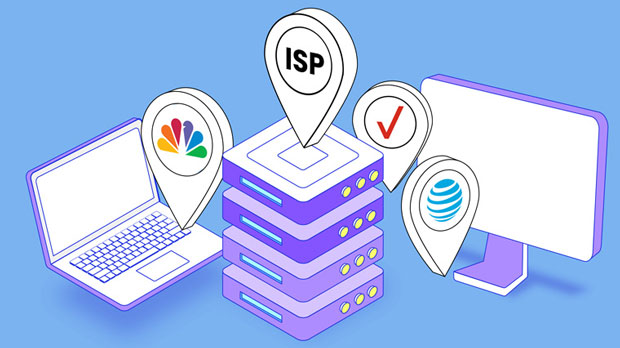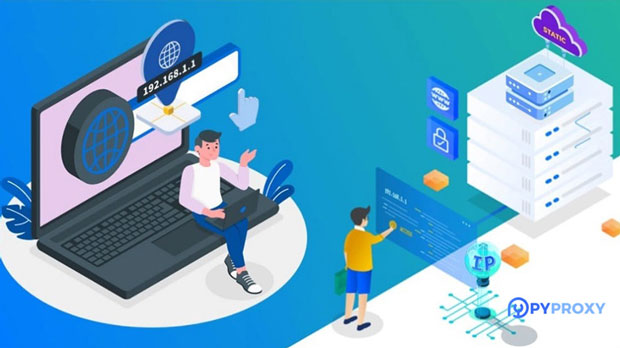Why choose a residential Socks5 proxy over a regular proxy?
In the world of online privacy, security, and anonymity, proxies play a critical role. Among the various proxy types, socks5 proxies, particularly residential ones, have gained significant attention due to their ability to offer a higher level of security, anonymity, and flexibility. While regular proxies might be sufficient for some basic use cases, residential SOCKS5 proxies provide distinct advantages, especially for tasks that require high levels of trust, reliability, and undetectable online activity. In this article, we will explore the reasons why choosing residential SOCKS5 proxies is a better option than using regular proxies. 1. What Is the Difference Between Residential and Regular Proxies?Before diving into the reasons why residential SOCKS5 proxies are more beneficial, it is essential to understand the key differences between residential and regular proxies. Proxies act as intermediaries between a user's device and the internet, masking the user's IP address and providing anonymity. The difference lies in the type of IP address they use:- residential proxies: These proxies route traffic through real residential IP addresses, which are provided by Internet Service Providers (ISPs). They are associated with actual households and physical locations, making them appear as legitimate users.- Regular Proxies (Datacenter Proxies): These proxies use IP addresses hosted on data centers rather than residential areas. They often appear to be part of large-scale networks, making them easier to detect as proxies.This difference is what gives residential SOCKS5 proxies an edge over regular proxies in terms of anonymity and reliability.2. Enhanced Anonymity with Residential SOCKS5 ProxiesOne of the primary reasons to choose residential SOCKS5 proxies over regular proxies is the enhanced anonymity they offer. Since residential proxies use real IP addresses tied to actual households, it is far less likely that they will be flagged as suspicious or associated with proxy usage. Regular proxies, especially datacenter ones, are easily recognizable by websites and online services due to the nature of the IPs they use.For instance, websites like e-commerce platforms, social media networks, and online services are highly sensitive to unusual traffic patterns. They can quickly identify and block datacenter proxy IPs, leading to a failed attempt to access the site or engage in specific online activities like web scraping, automation, or data gathering. On the other hand, residential proxies are much harder to identify and block, allowing users to maintain a more seamless and anonymous online presence.3. Bypassing Geo-restrictions and CensorshipAnother significant advantage of residential SOCKS5 proxies is their ability to bypass geo-restrictions and censorship more effectively than regular proxies. Many websites and online services restrict access to users based on their geographic location. While regular proxies can sometimes help users bypass these geo-blocks, they are often detected and blocked by these services due to their datacenter origin.Residential proxies, however, provide IP addresses tied to specific locations, making it easier for users to appear as if they are browsing from a different country or region. This is particularly useful for accessing region-locked content on streaming services, overcoming government censorship in certain countries, or conducting market research in various global markets.4. Reduced Risk of IP Bans and CaptchasIP bans and captchas are common barriers faced by users of regular proxies. When a large number of users access a website from the same IP range (as often happens with datacenter proxies), it increases the risk of being flagged by the website's security systems. This can lead to temporary or permanent bans, making it impossible to access the site.Residential SOCKS5 proxies mitigate this issue by providing IPs associated with individual homes, making it much harder for websites to detect suspicious traffic patterns. These proxies distribute the load across thousands of unique residential IP addresses, reducing the likelihood of a single user being flagged or blocked. Additionally, they minimize the chances of encountering captchas, which are often triggered by unusual traffic.5. Better Success Rates for Web Scraping and AutomationWeb scraping and automation are commonly used for data extraction, competitive analysis, and research purposes. However, these activities are often detected and blocked by websites due to the high volume of requests made from a single IP address. Regular datacenter proxies are especially vulnerable in these scenarios, as websites can easily detect and block them.Residential SOCKS5 proxies provide a higher success rate for web scraping and automation tasks because they appear as genuine residential users. Since requests come from diverse geographical locations and individual households, websites are less likely to flag the activity as suspicious. This makes residential proxies the preferred choice for businesses or individuals involved in large-scale data gathering, scraping, or automation.6. Faster Speeds and Lower LatencyAlthough regular proxies may seem like a quicker and more cost-effective option, residential SOCKS5 proxies often provide superior performance in terms of speed and latency. While datacenter proxies may offer higher bandwidth, they can also experience congestion due to overuse. This can result in slower speeds, especially if the proxy provider is using a limited number of IP addresses.Residential proxies, on the other hand, are spread across various residential locations, reducing the load on each individual IP address. This leads to more consistent speeds, lower latency, and a more stable connection. For users engaged in activities that require real-time interaction, such as gaming or live streaming, residential proxies can offer a better user experience.7. Better Cost-Effectiveness in the Long RunWhile residential SOCKS5 proxies may have a higher upfront cost compared to regular proxies, they can be more cost-effective in the long run. This is because the increased reliability, lower risk of IP bans, and higher success rates for tasks like web scraping and automation often lead to more efficient outcomes and fewer disruptions.Additionally, using regular proxies can result in repeated costs for rotating IPs, managing bans, and mitigating issues such as captchas. With residential proxies, users can reduce the need for constant proxy rotation, resulting in fewer maintenance efforts and lower long-term operational costs.8. Use Cases for Residential SOCKS5 ProxiesThe advantages of residential SOCKS5 proxies make them ideal for a variety of use cases, including:- Online Market Research: Collecting data on consumer behavior, competitor analysis, and pricing data.- E-commerce: Accessing different regional pricing, product availability, and stock information without getting blocked.- Bypassing Government Censorship: Accessing restricted websites and social media platforms in countries with strict internet controls.- Ad Verification: Ensuring that ads are correctly displayed and functioning in different regions.- SEO Monitoring: Monitoring search engine rankings from different locations without being flagged.ConclusionResidential SOCKS5 proxies offer several compelling advantages over regular proxies, particularly when it comes to anonymity, bypassing geo-restrictions, reducing the risk of bans, and ensuring better performance for tasks like web scraping and automation. While they may come at a higher cost, their long-term value in providing seamless, secure, and reliable internet access makes them an ideal choice for businesses and individuals who need robust online privacy and the ability to conduct activities without interruption.
2024-12-23

























































